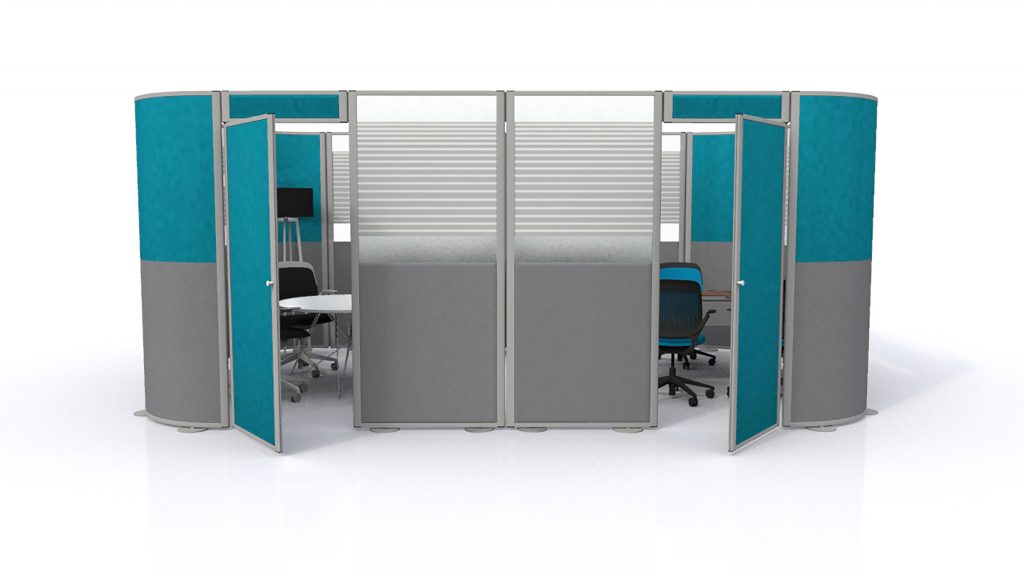How to Strike the Right Balance Between Collaboration and Privacy with Your Office Design?
A key factor in office culture which developed during the 1970s and 1980s was a perceived notion that by giving staff complete privacy would lead to an increase in their productivity and efficiency. This led to the conception of the cubicle layout, a flimsy multitude of boxes which are set up in massive cube blocks which distinctly resemble the same environment which battery hens are raised in. Developed with the promise of your own little patch to customise and in response to the classroom styled layouts which came before it, the cubicle design on paper seemingly had it all.
The practicality of them quickly became apparent as organisations adapted their offices with the ‘innovative’ new design. The initial negative factor was noise and unsurprisingly, packing people into tight, modular layouts means you can hear everyone talking, phones ringing and chairs creaking all of the time. Rather than giving staff privacy, the cubicle layout only makes productivity worse by introducing a tirade of distractions. Ever since, designers have been trying to create designs that provide much needed private space while opening up employees to collaboration. Delta Acoustic Screens adopt the privacy provided by a cubicle screen but cut it in half allowing natural light to flow through the room and incorporates acoustic foam to soak up unwanted sound.
The failure of the cubicle design has led to the rise of the ‘living office’ which combines the best of private and social space. While maintaining the same open office layout, desks are arranged in friendly clusters to create an environment which encourages collaboration. The living office layout is benefited significantly by allowing significantly more natural light to flow through which creates a more comfortable and calming atmosphere.
Noise is a notorious problem with open office layouts and has led to acoustics becoming an increasingly integral part of the design process. Without putting on a pair of noise cancelling headphones or creating a series of private offices, the best way of reducing ambient office noise is by introducing soft surfaces such as carpets, partition screens and even walls. More innovative solutions involve creating flexible work spaces for staff where they feel most comfortable for the work they are doing, but this simply is not feasible for small businesses where space is scarce.
The need to create a positive mix of collaboration with privacy are what the Delta Acoustic Screens are designed to address. Many small businesses simply don’t have the budget to completely re-design the office, but with minor adjustments to the arrangement of the office combined with acoustic absorbent screens, you can create a balance of encouraging creativity while providing the privacy which staff need to complete their work. The size and design of the screen is up to you, meaning there is the option to allow more collaboration with a curved top design or provide more privacy with a straight top. Each Delta Acoustic Screen is developed with an eye-catching design, so they will even introduce a stylish and modern touch to your office.
